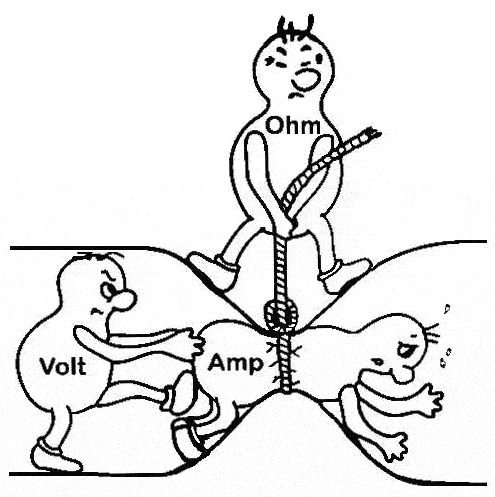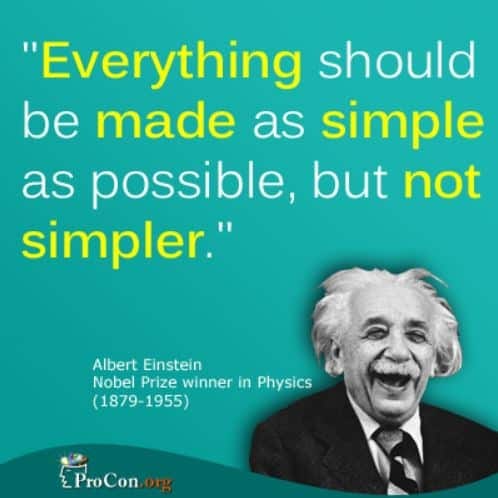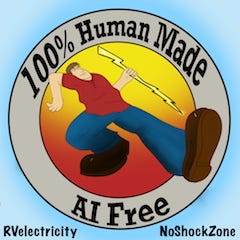Road Signs
“Everything should be made as simple as possible, but not simpler.” —Albert Einstein
I’ve been thinking a lot about simplification lately. That’s because I’m working on a new demonstration that will teach RV technicians and owners about the differences between split-phase and 3-phase power. And while I’m qualified to troubleshoot industrial 3-phase power up to 480/277 volts, that’s not the point of this exercise. Why this needs to be taught is that since 2017 the National Electrical Code has allowed 3-phase power to be distributed in campgrounds, and there’s a lot of things that can go wrong in a hurry if you don’t understand the basics of 3-phase power, especially if you’re wiring campground pedestals (like many work campers do).
To be successful at teaching potentially complex subjects, it’s necessary to break them down into the smallest possible elements, then build from there. And to do that I spend a lot of time with thought experiments. These are little mind games I play in my head about possible ways that things actually work.
Drips and Drops…
For example, if you’ve read any of my articles about voltage and amperage, you’ll see that I compare electrons to drops of water. Now, I know that electrons behave nothing like water actually does. However, there are simple analogies comparing water pressure to voltage, and water flow to current, etc.
In fact this is exactly how I taught myself about electricity when I was a young child of maybe 8 years of age. I had read in a library book (remember those things) about the relationships between water pressure, pipe resistance and flow, comparing it to voltage, resistors and amperage. And I was off in the backyard with a water hose watching what happened as I was squeezing the hose to increase resistance and reduce pressure while the water was flowing. This was my epiphany to how to figure out electricity.
It’s not really that complicated (or is it?)
Einstein did much the same thing when he was developing his Special Theory of Relativity. He would come up with these mind-experiments while riding on the train and thinking about what would happen to a beam of a flashlight as it was shined forwards or backwards on a train moving at a tiny fraction of the speed of light. His epiphany came when he realized that since the speed of light was a constant, the beam of light from the flashlight couldn’t be going faster than the 670,615,200 mph speed of light, even by the meager 40 mph of the train, no matter where it was observed from.
These thought experiments hinted that time compression or expansion must occur depending on if you’re on the moving train with a flashlight, or standing on the platform watching the flashlight coming towards you. This is how Einstein eventually came up with concepts like his Special Theory of Relativity and the seemingly simple equation of E=MC2, both of which have been proved to be correct to as many decimal places as we can measure with modern technology. Just brilliant!!!
So what does that mean for the rest of us non-Einsteins? Well, if you want to understand something or anything well, you need to break it down to its basics. This could be about towing your trailer, balancing your checkbook, learning a new smartphone app, or anything else important or interesting to you.
Once you get something down to the basic elements, then you build it up into the complicated mechanism it could be. Everything in your RV is just a bunch of simple machines. Understand each of the simple machines and you’ll eventually be able to understand the entire complicated mechanism. In fact, complicated machines often seem to take on a life of their own, the “ghost in the machine” quoted often in literature.
So the next time you come to one of my seminars or watch one of my videos, see if I’ve accomplished my goal of making these presentation as simple as possible, but not too simple.
Thanks, Albert. You da man!
Let’s play think safely out there... Mike









Bravo Mike! I loved your drop analogy to Ohms law and the cartoon. I had not seen it before! I also like the application of Occam’s razor to teaching complex subjects which can be paraphrased as “The simplest explanation is usually the best one."
As usual, educational and entertaining….